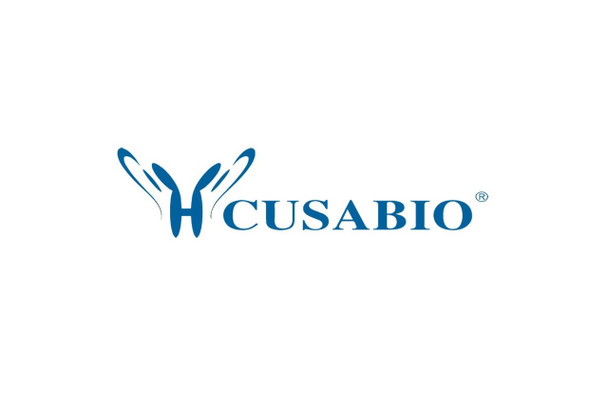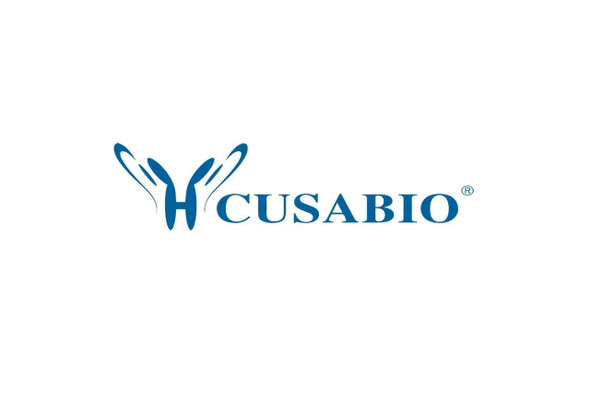Cusabio Human Recombinants
Recombinant Human POU domain, class 4, transcription factor 2 (POU4F2) | CSB-EP622514HU
- SKU:
- CSB-EP622514HU
- Availability:
- 13 - 23 Working Days
Description
Recombinant Human POU domain, class 4, transcription factor 2 (POU4F2) | CSB-EP622514HU | Cusabio
Alternative Name(s): Brain-specific homeobox/POU domain protein 3B (Brain-3B) (Brn-3B) (BRN3B)
Gene Names: POU4F2
Research Areas: Others
Organism: Homo sapiens (Human)
AA Sequence: MNTIPCTSAASSSSVPISHPSALAGTHHHHHHHHHHHHQPHQALEGELLEHLSPGLALGAMAGPDGAVVSTPAHAPHMATMNPMHQAALSMAHAHGLPSHMGCMSDVDADPRDLEAFAERFKQRRIKLGVTQADVGSALANLKIPGVGSLSQSTICRFESLTLSHNNMIALKPILQAWLEEAEKSHREKLTKPELFNGAEKKRKRTSIAAPEKRSLEAYFAIQPRPSSEKIAAIAEKLDLKKNVVRVWFCNQRQKQKRMKYSAGI
Source: E.coli
Tag Info: N-terminal 10xHis-tagged and C-terminal Myc-tagged
Expression Region: 1-265aa
Sequence Info: Full Length of Isoform 2
MW: 36.0 kDa
Purity: Greater than 85% as determined by SDS-PAGE.
Relevance: DNA-binding transcriptional regulator and coregulator that recognizes and binds to the consensus octamer binding site 5'-AT[A/T]A[T/A]T[A/T]A-3' in promoter of target genes. Plays a fundamental role in the gene regulatory network essential for retinal ganglion cell differentiation. Cooperates with the transcription factor ISL1 to achieve RGC fate specification in the developing retina. Plays also a role in RGC axon formation and guidance by regulating gene expression of specific target genes. Plays a role in TNFSF11-mediated terminal osteoclast differentiation. Binds chromatin at promoter region of target genes.Isoform 1: Acts either as a transcriptional activator or repressor. Negatively regulates transcriptional activity of homeobox domain transcriptional factors DLX1 and DLX2, and hence prevents DLX1- and DLX2-mediated ability to promote amacrine cells specification. Involved in the positive regulation of the transcriptional factor PAX6 expression through its binding to the neuroretina-specific enhancer in neuroretina cells. Mediates positive transcriptional regulation of heat shock protein HSPB1 expression in cardiac myocytes. Positively regulates POU4F1 expression by interacting directly with a highly conserved autoregulatory domain surrounding the transcription initiation site of the POU4F1 gene promoter. Plays a role in the regulation of breast cancer cell growth by promoting transcription activation as well as repression of specific target genes. Involved in tumor breast progression and invasion. Stimulates the promoter activity of the GTP-binding protein RIT2 gene containing the octamer binding site in retinal ganglion cells. Plays also a role either as a transcriptional coactivator or corepressor. Transcriptional coactivator cooperating with transcription factors ISL1 and ISL2 to potentiate transcriptional activation of retinal ganglion cell target genes. Antagonizes the transcriptional stimulatory activity of POU4F1 by preventing its binding to the octamer motif. Binds to the octamer binding site to form a ternary complex with ISL1 in promoter of target genes.Isoform 2: Acts either as a transcriptional activator or repressor. Stimulates the promoter activity of the neuronal nicotinic acetylcholine receptor alpha CHRNA2. Negatively regulates the apoptosis regulator BAX promoter activity. Inhibits promoter activity of the neuronal intermediate filament protein alpha-internexin INA gene. Plays a role in the regulation of breast cancer cell growth by promoting transcription activation as well as repression of specific target genes. Involved in tumor breast progression and invasion. Inhibits the promoter activity of the GTP-binding protein RIT2 gene containing the octamer binding site in retinal ganglion cells. Plays also a role either as transcriptional coactivator or corepressor. Transcriptional coactivator cooperating with transcription factors TP53 to potentiate transcriptional activation of BAX promoter activity, and hence increases neuronal cell apoptosis. Antagonizes the transcriptional stimulatory activity of POU4F1 by preventing its binding to the octamer motif. Acts also as a transcriptional coactivator via its interaction with the transcription factor ESR1.
Reference: "Expression of the Brn-3b transcription factor correlates with expression of HSP-27 in breast cancer biopsies and is required for maximal activation of the HSP-27 promoter." Lee S.A., Ndisang D., Patel C., Dennis J.H., Faulkes D.J., D'Arrigo C., Samady L., Farooqui-Kabir S., Heads R.J., Latchman D.S., Budhram-Mahadeo V.S. Cancer Res. 65:3072-3080(2005)
Storage: The shelf life is related to many factors, storage state, buffer ingredients, storage temperature and the stability of the protein itself. Generally, the shelf life of liquid form is 6 months at -20?/-80?. The shelf life of lyophilized form is 12 months at -20?/-80?.
Notes: Repeated freezing and thawing is not recommended. Store working aliquots at 4? for up to one week.
Function: DNA-binding transcriptional regulator and coregulator that recognizes and binds to the consensus octamer binding site 5'-AT[A/T]A[T/A]T[A/T]A-3' in promoter of target genes
Involvement in disease:
Subcellular Location: Nucleus, Nucleus speckle, Cytoplasm, Cell membrane
Protein Families: POU transcription factor family, Class-4 subfamily
Tissue Specificity: Expressed in the ganglion cell layer of the retina (PubMed:7691107). Expressed in breast cancer cell lines (at protein level) (PubMed:11526481). Expressed in the brain (PubMed:7691107). Expressed in breast cancer cell lines (PubMed:11526481).
Paythway:
Form: Liquid or Lyophilized powder
Buffer: If the delivery form is liquid, the default storage buffer is Tris/PBS-based buffer, 5%-50% glycerol. If the delivery form is lyophilized powder, the buffer before lyophilization is Tris/PBS-based buffer, 6% Trehalose, pH 8.0.
Reconstitution: We recommend that this vial be briefly centrifuged prior to opening to bring the contents to the bottom. Please reconstitute protein in deionized sterile water to a concentration of 0.1-1.0 mg/mL.We recommend to add 5-50% of glycerol (final concentration) and aliquot for long-term storage at -20?/-80?. Our default final concentration of glycerol is 50%. Customers could use it as reference.
Uniprot ID: Q12837
HGNC Database Link: HGNC
UniGene Database Link: UniGene
KEGG Database Link: KEGG
STRING Database Link: STRING
OMIM Database Link: OMIM












